Abstract
1. The changes in cardiac output and mean right atrial pressure (R.A.P.) evoked by stimulation of the cardiac autonomic nerves were investigated in cats under chloralose anaesthesia, with unopened chests and spontaneous respiration, and with active vascular reflexes. Cardiac output was measured by thermal dilution; the technique used was calibrated against the direct Fick method.
2. The initial values of R.A.P. and output were varied by infusion of dextran-saline solution followed by withdrawal of blood. At positive values of R.A.P. withdrawal of blood caused a fall in R.A.P. with no change in cardiac output. At negative R.A.P. blood withdrawal caused a fall in output with little change in R.A.P.: the linear regression coefficient for output on R.A.P. was 48·2 ml./min.kg.mmHg (S.E. 2·06, n = 63, nine cats).
3. Stimulation of the right cardiac sympathetic nerve increased heart rate by 69·2 beats/min (S.E. 4·0) from the resting rate of 158 beats/min (S.E. 6·3, ten cats). The acceleration was accompanied in most instances by a rise in cardiac output and a fall in R.A.P. and the magnitude of the rise in output was related to that of the fall in R.A.P.
4. In no experiment could R.A.P. be reduced below -2·5 mmHg either by withdrawal of blood or by sympathetic stimulation. At negative values of R.A.P. the fall in R.A.P. and rise in output evoked by sympathetic stimulation were small; substantial changes could be obtained only from positive initial values of R.A.P. The proportional increase in output evoked by a given proportional increase in heart rate during near-maximal sympathetic stimulation had a linear relationship to the initial value of R.A.P. over the range -2 to +8 mmHg. The output increment was less than proportional to the rate increment at all values of R.A.P. below +3 mmHg.
5. In five experiments stimulation of the left cardiac sympathetic nerve evoked a greater increase in output for a given increase in heart rate than did stimulation of the right nerve; on the other hand both nerves gave similar increments of output for a given fall in R.A.P.
6. Stimulation of the distal end of the right vagus nerve slowed the heart and caused a fall in cardiac output and a rise in R.A.P. The change in output associated with a given change in R.A.P. was significantly greater (P = 0·05) during sympathetic than during vagal stimulation in 14 out of 18 tests; the difference increased as circulating volume was reduced.
7. It is concluded that the relationship between cardiac output and R.A.P. during sympathetic and vagal stimulation is consistent with the hypothesis that neurally evoked changes in cardiac performance vary output mainly, but not exclusively, by inducing changes in R.A.P. which alter the pressure gradient for the return of blood to the right atrium from the periphery.
Full text
PDF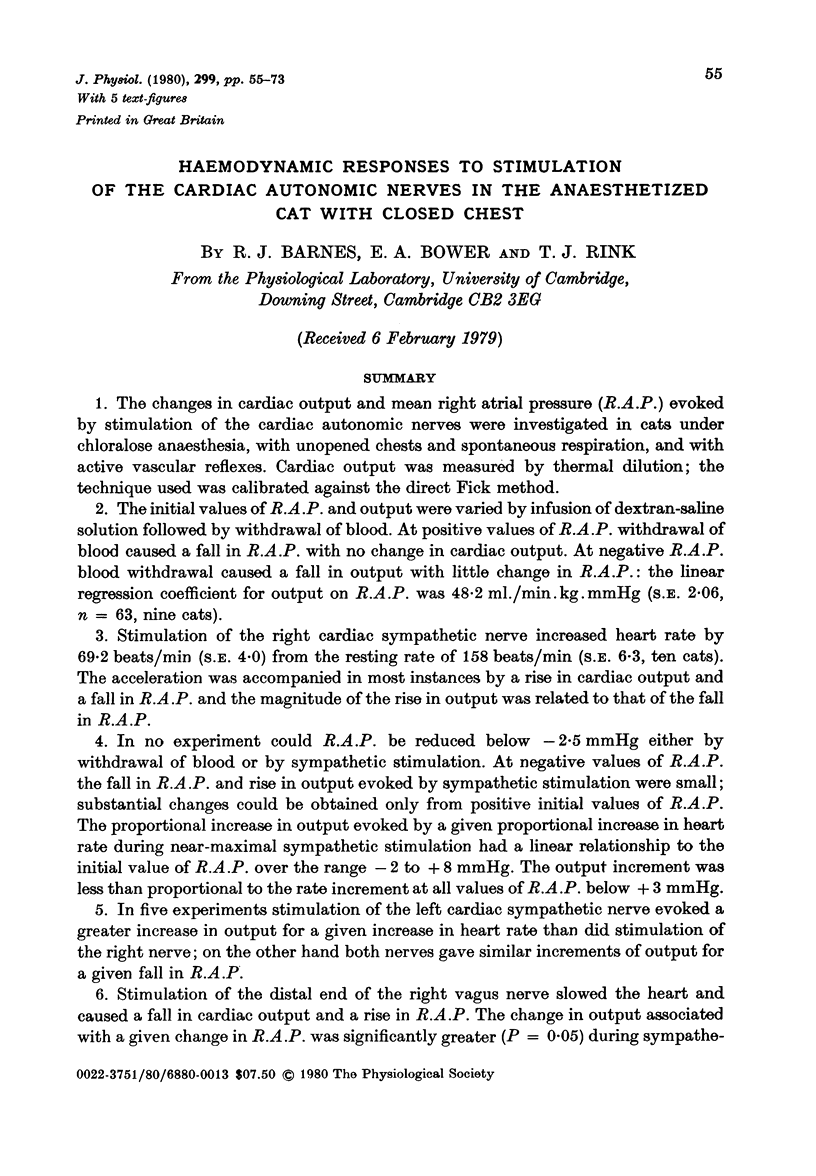
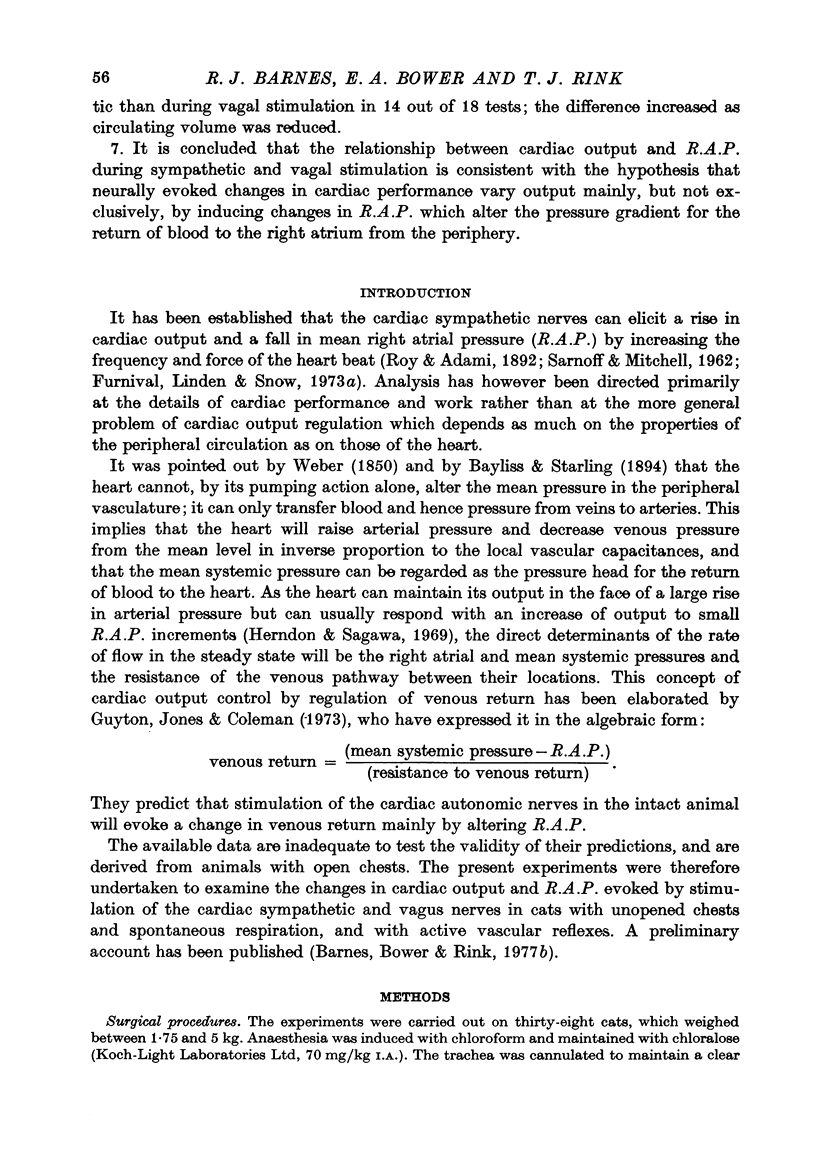
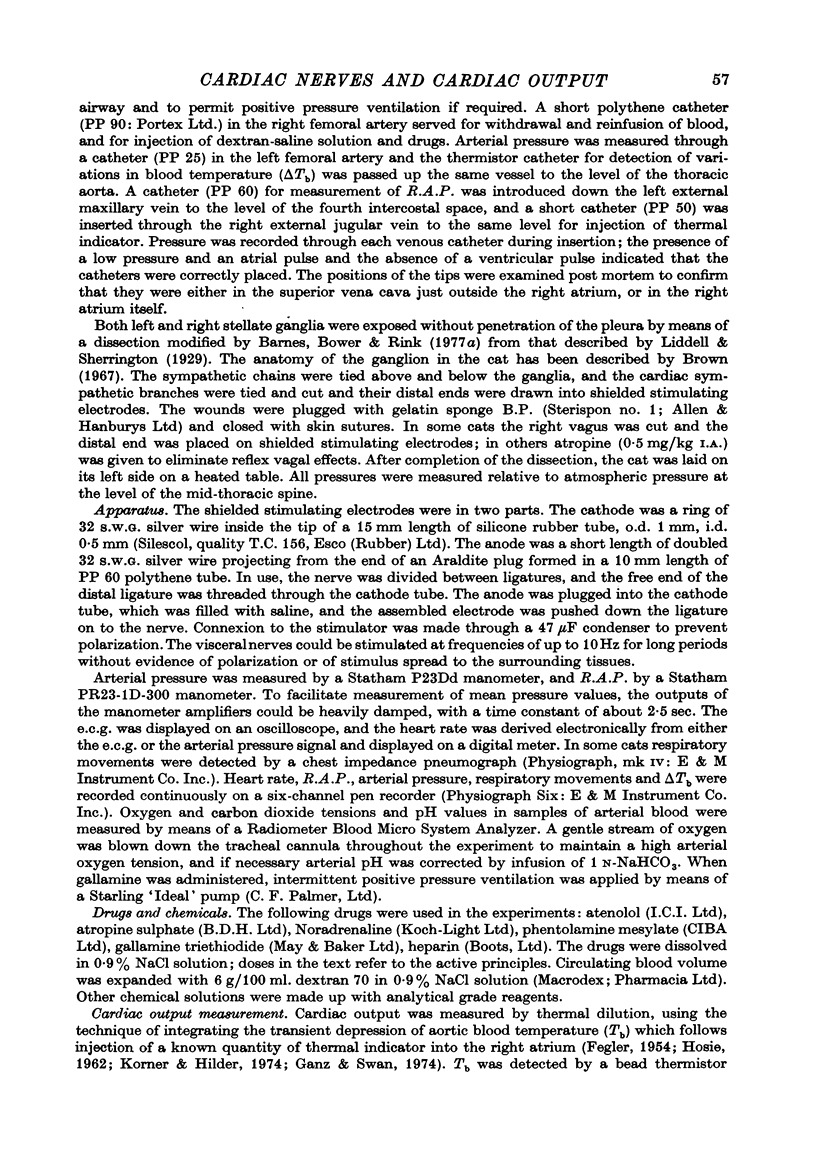
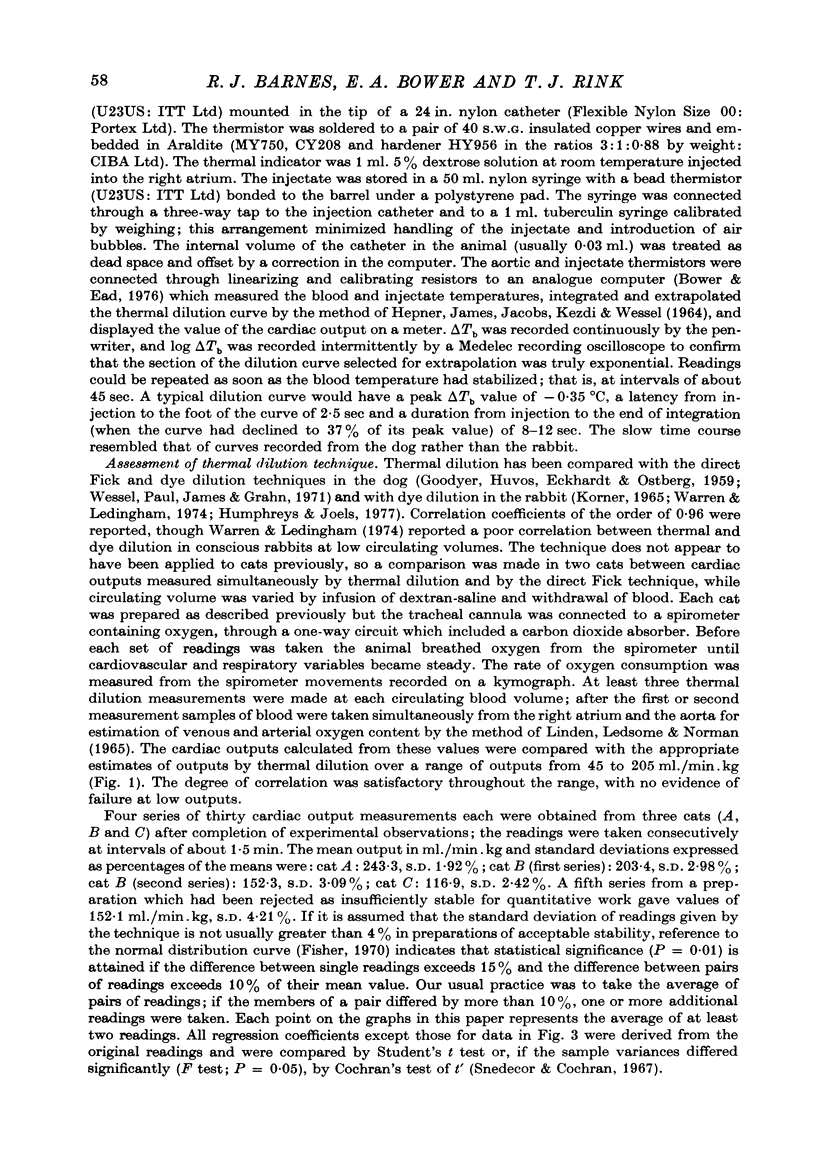
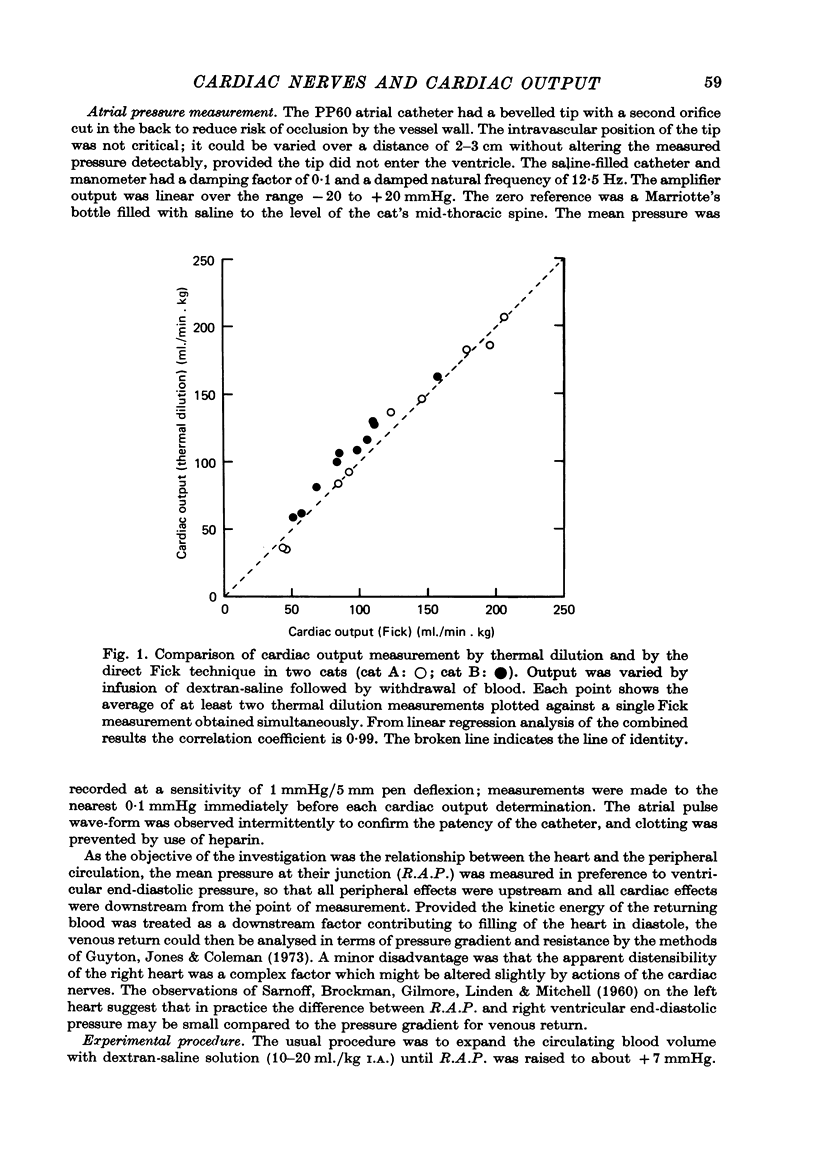

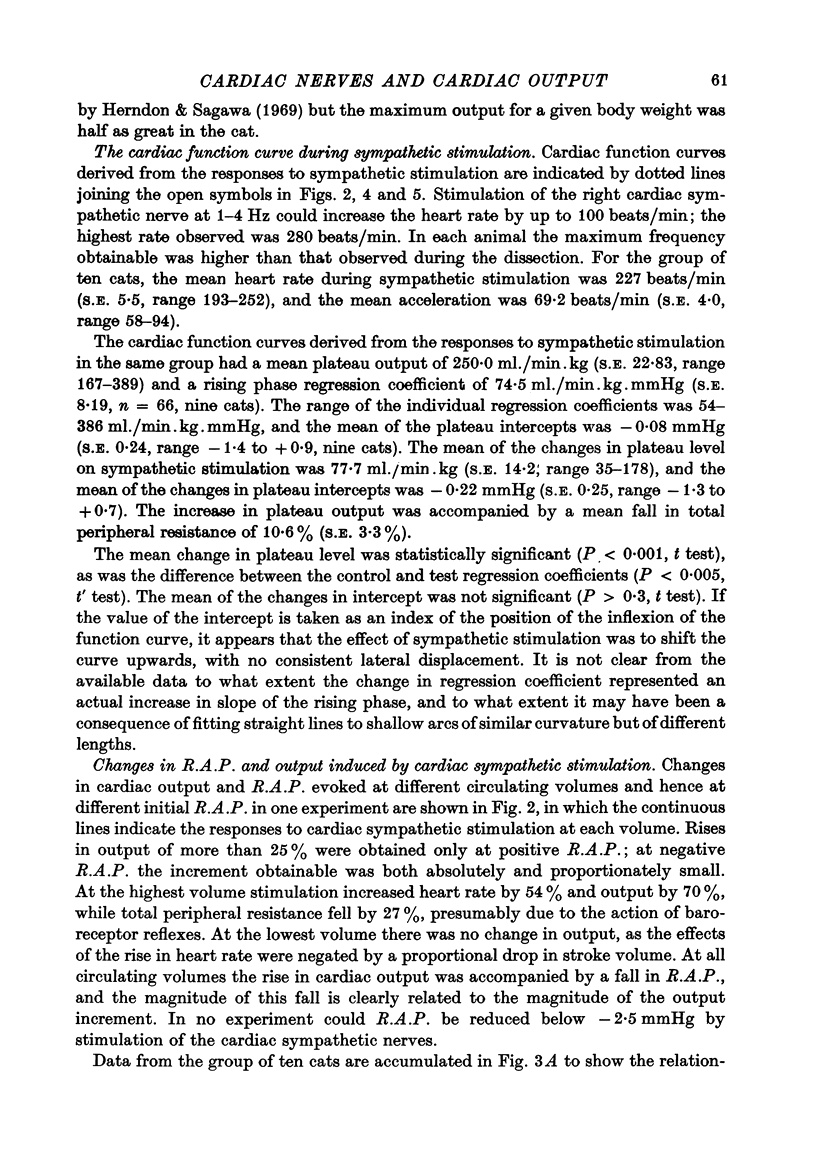
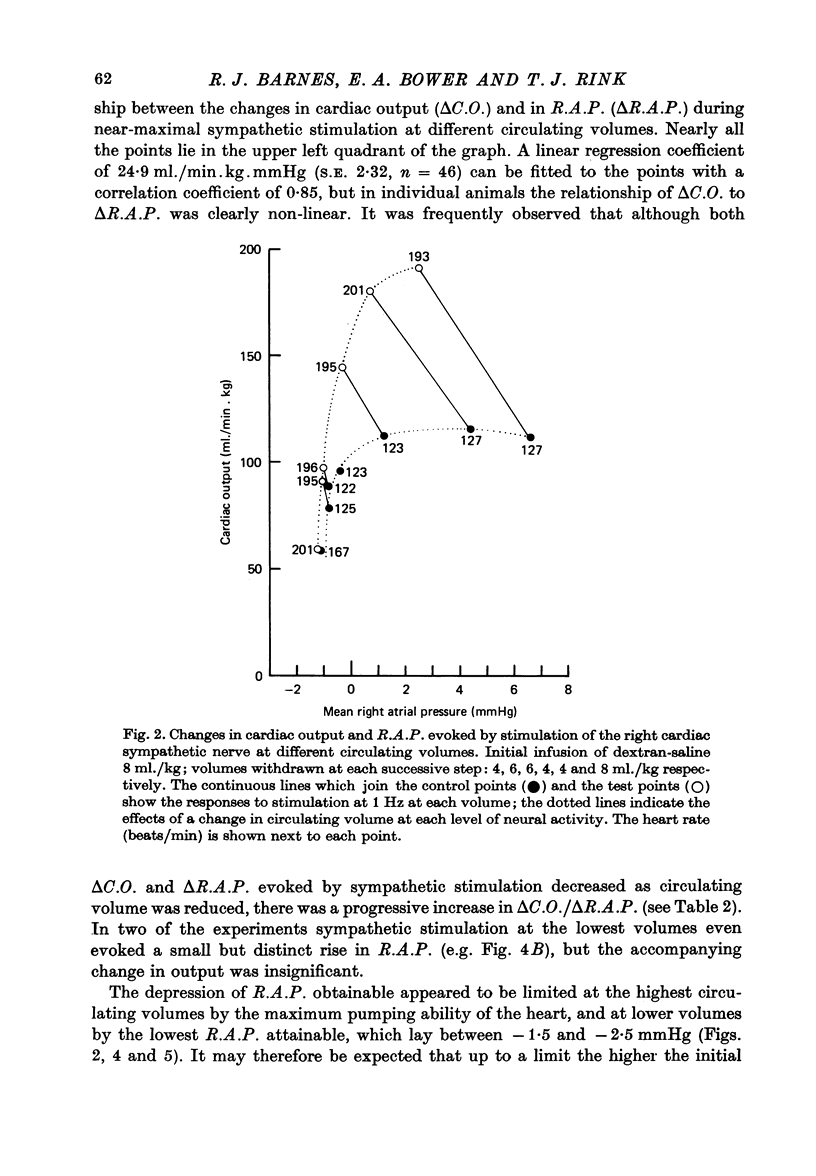
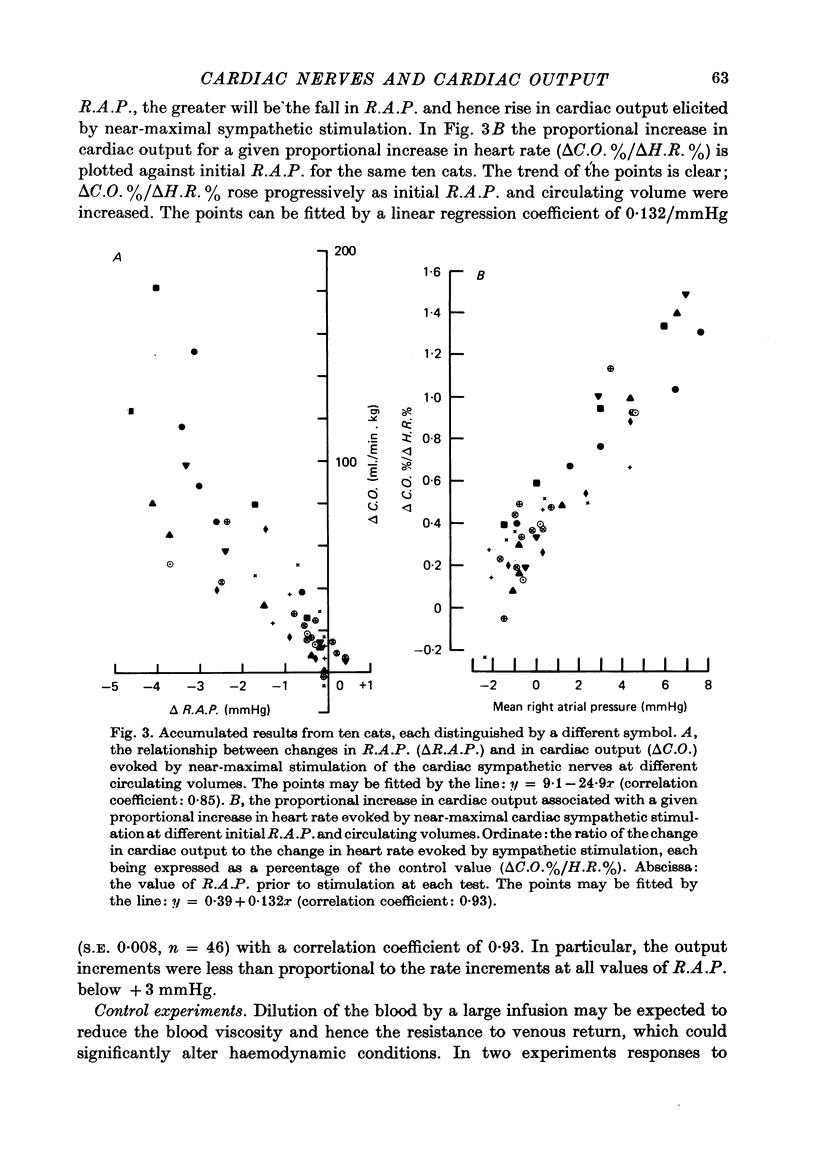
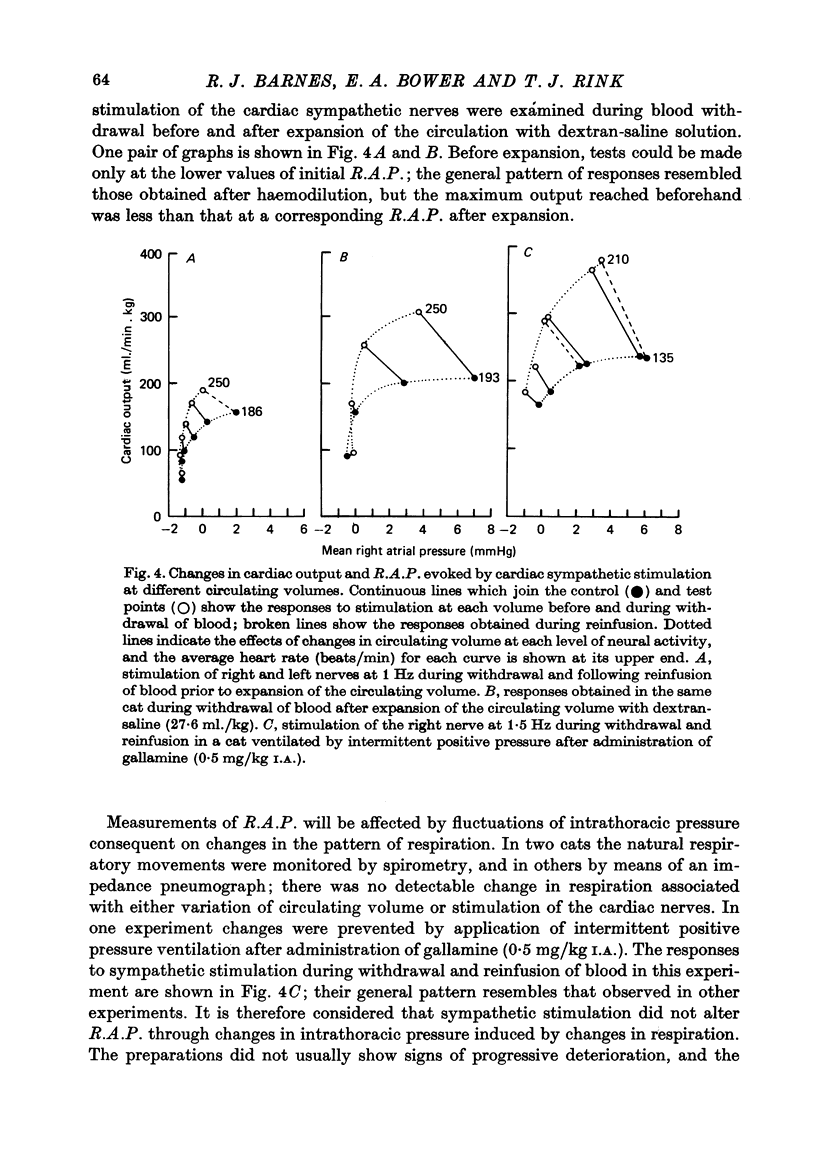
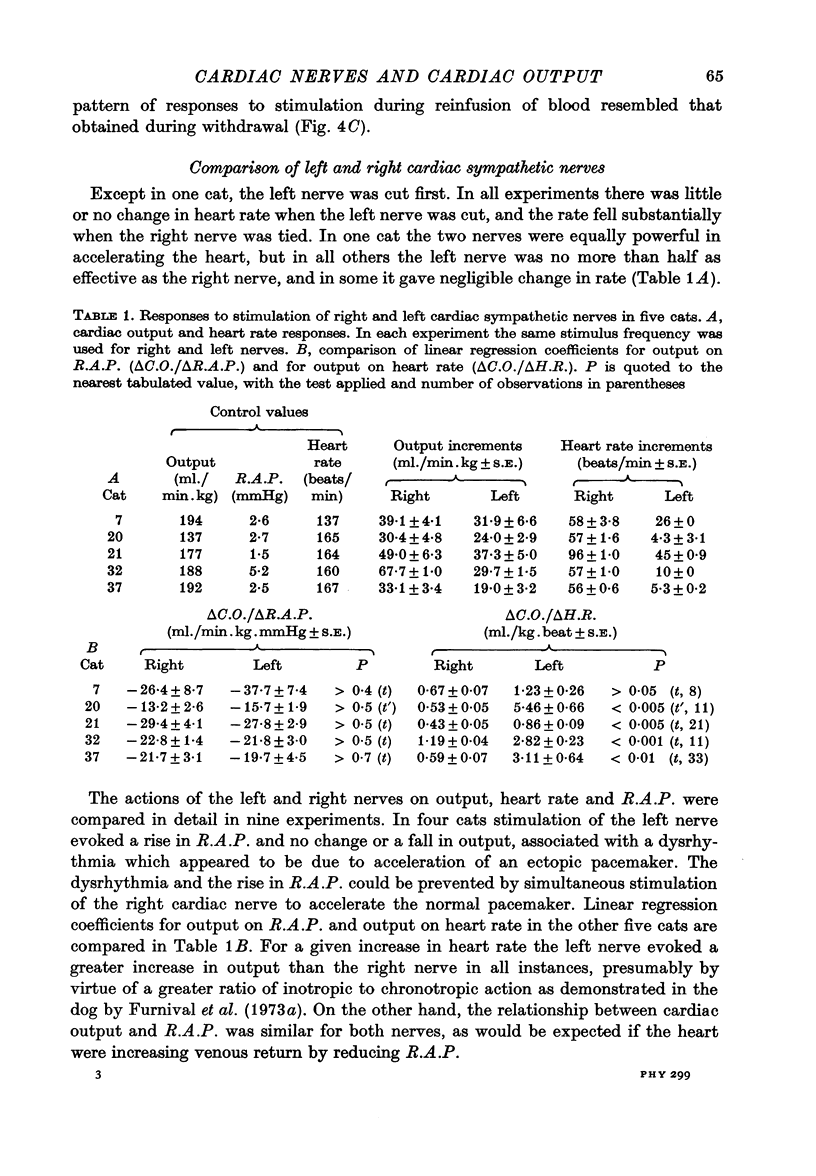
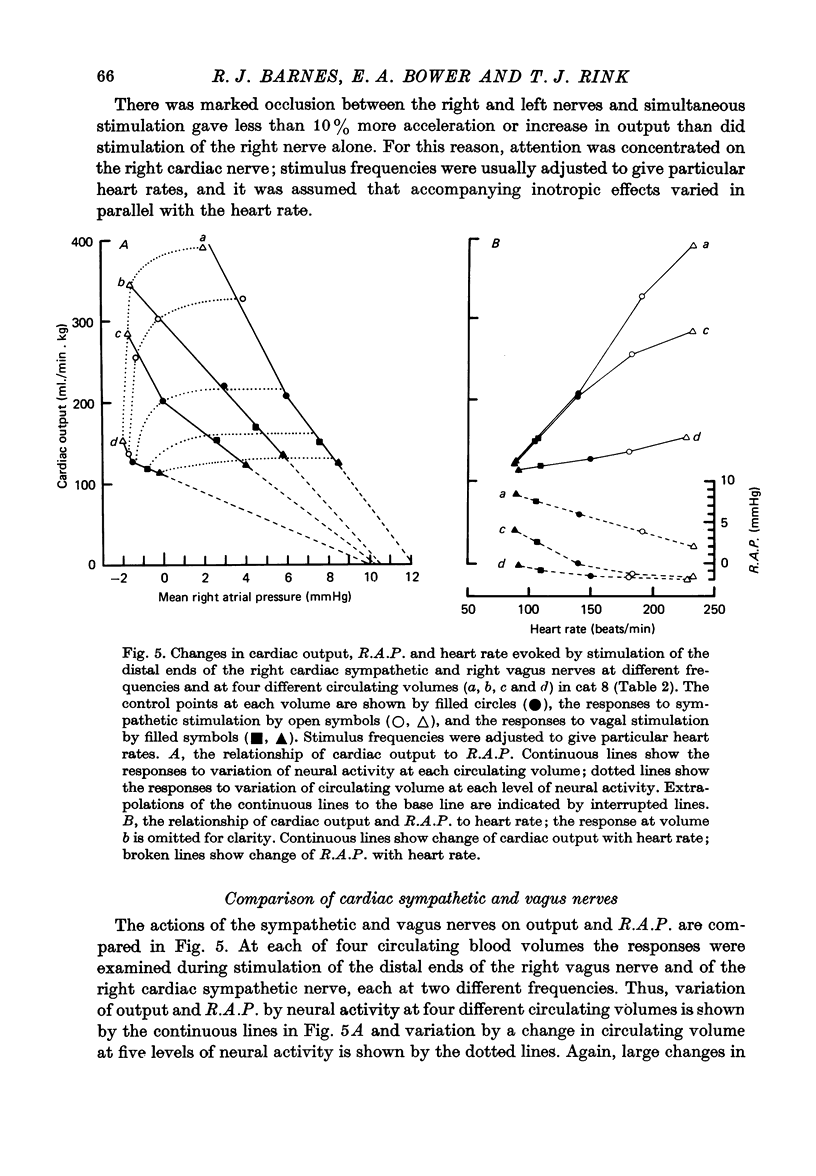
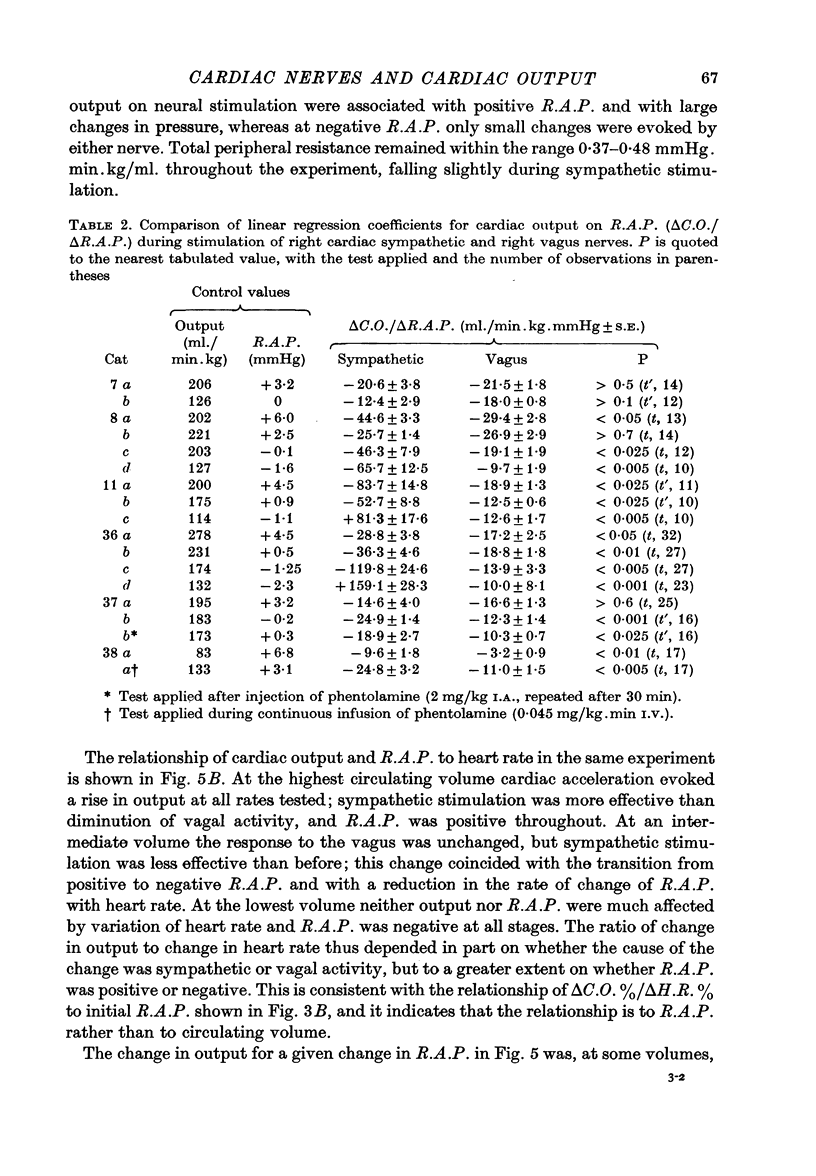
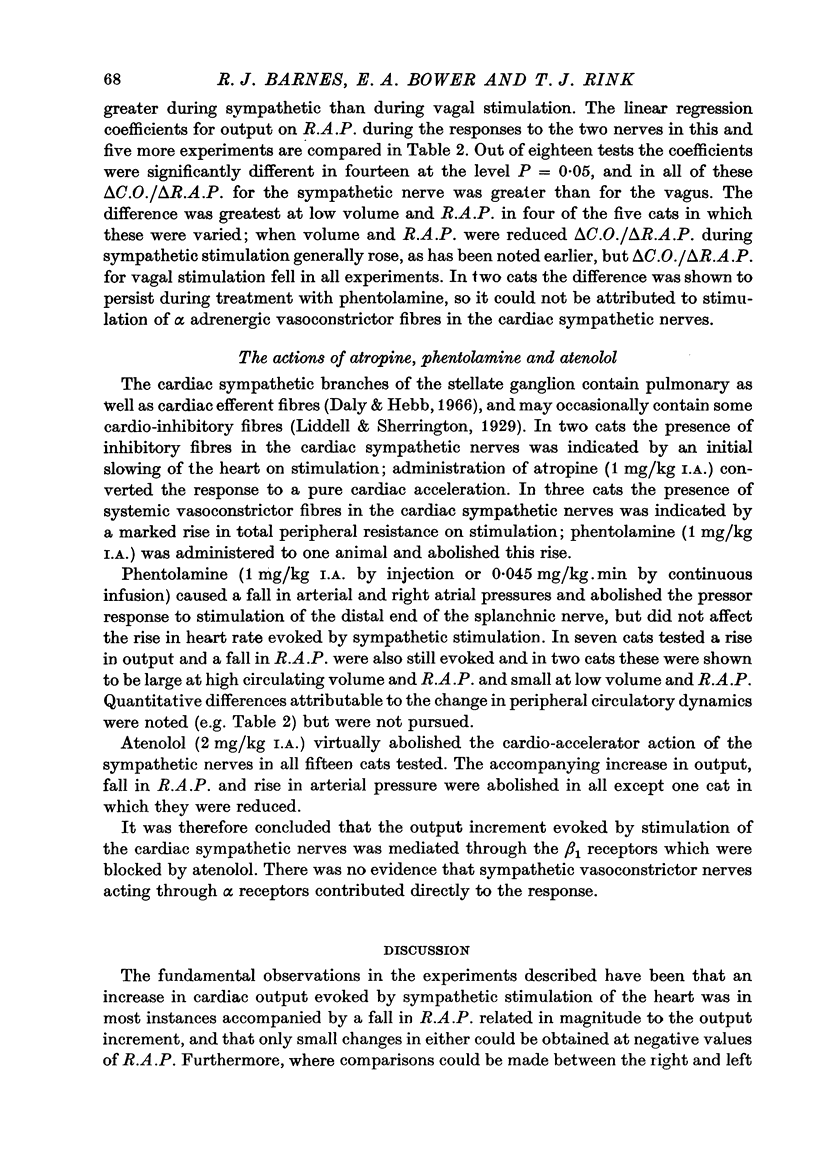
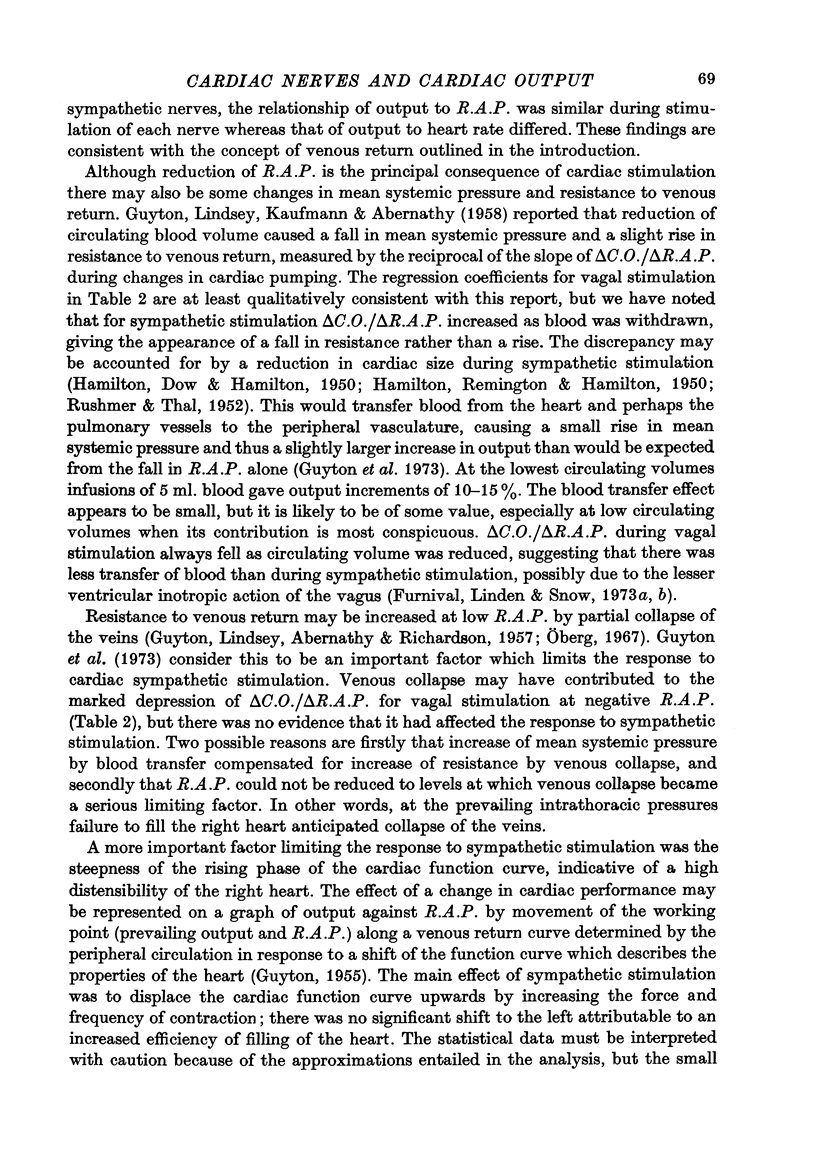
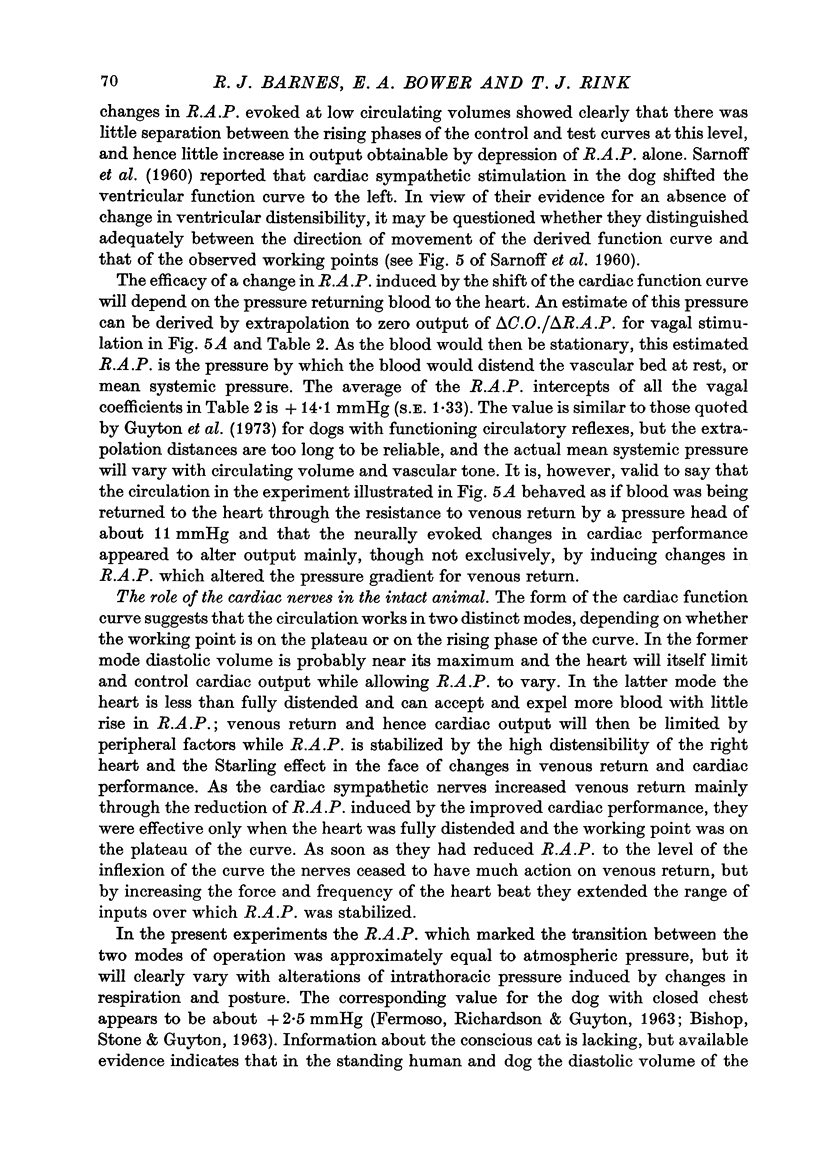

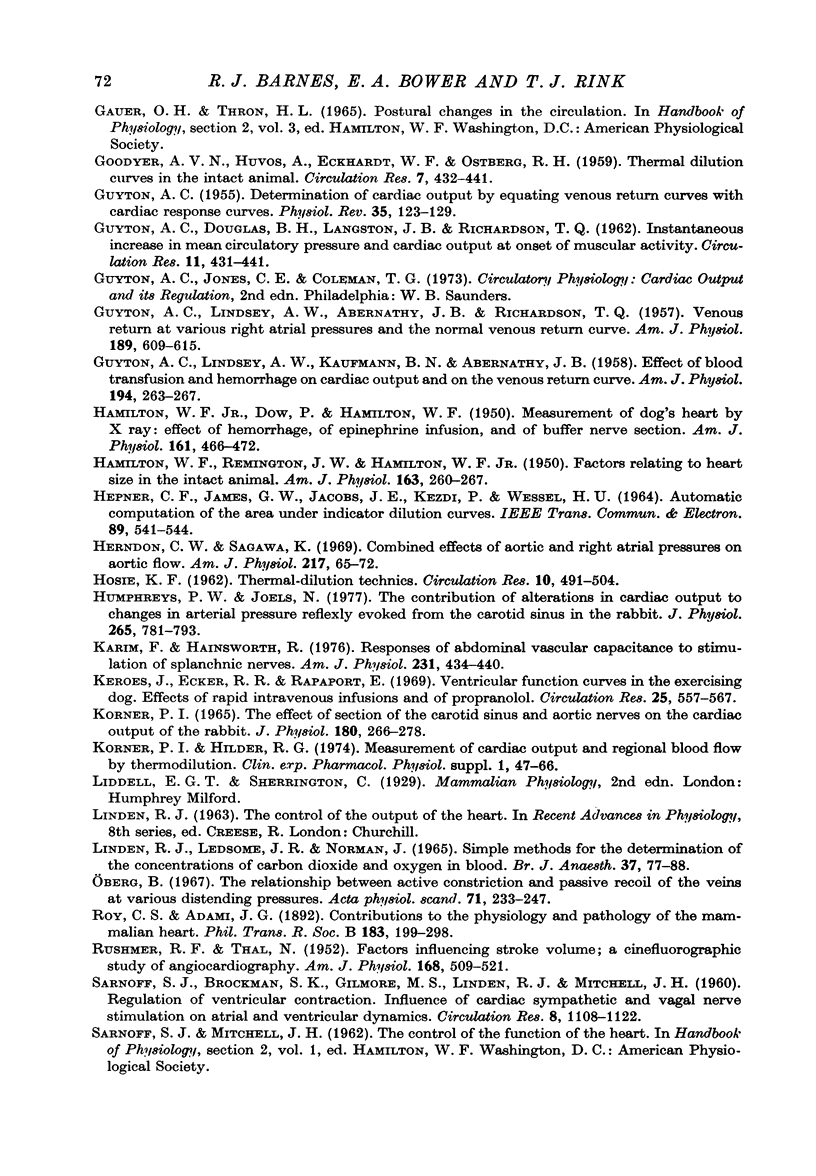
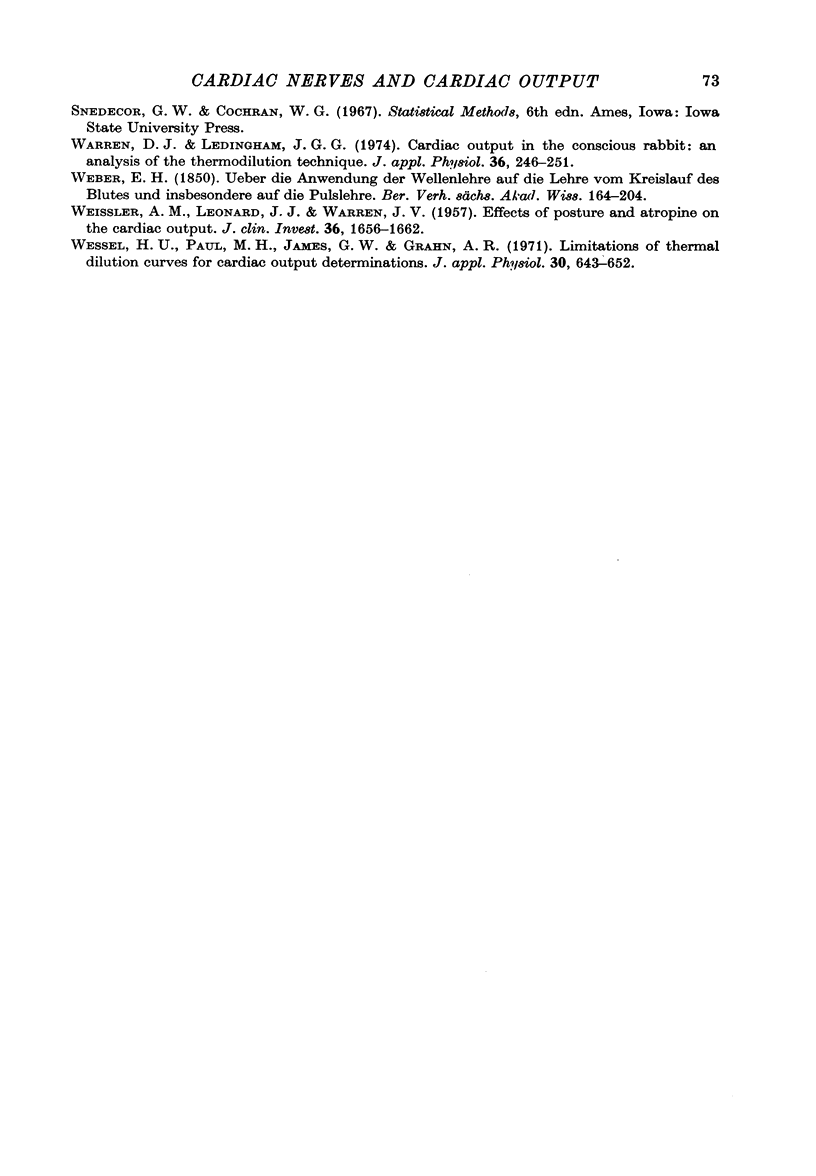
Selected References
These references are in PubMed. This may not be the complete list of references from this article.
- BISHOP V. S., STONE H. L., GUYTON A. C. CARDIAC FUNCTION CURVES IN CONSCIOUS DOGS. Am J Physiol. 1964 Sep;207:677–682. doi: 10.1152/ajplegacy.1964.207.3.677. [DOI] [PubMed] [Google Scholar]
- Barnes R. J., Bower E. A., Rink T. J. A class preparation for the investigation of the neural control of cardiac output [proceedings]. J Physiol. 1977 Oct;271(2):5P–6P. [PubMed] [Google Scholar]
- Barnes R. J., Bower E. A., Rink T. J. Haemodynamic responses to simulation of the cardiac nerves at different right atrial pressures [proceedings]. J Physiol. 1977 Oct;271(2):40P–41P. [PubMed] [Google Scholar]
- Barnes R. J., Bower E. A., Rink T. J. Haemodynamic responses to stimulation of the splanchnic and cardiac sympathetic nerves at different right atrial pressures [proceedings]. J Physiol. 1978 Mar;276:65P–66P. [PubMed] [Google Scholar]
- Bayliss W. M., Starling E. H. Observations on Venous Pressures and their Relationship to Capillary Pressures. J Physiol. 1894 Apr 17;16(3-4):159–318.7. doi: 10.1113/jphysiol.1894.sp000498. [DOI] [PMC free article] [PubMed] [Google Scholar]
- Biscoe T. J., Bradley G. W., Purves M. J. The relation between carotid body chemoreceptor discharge, carotid sinus pressure and carotid body venous flow. J Physiol. 1970 May;208(1):99–120. doi: 10.1113/jphysiol.1970.sp009108. [DOI] [PMC free article] [PubMed] [Google Scholar]
- Brown A. M. Cardiac sympathetic adrenergic pathways in which synaptic transmission is blocked by atropine sulfate. J Physiol. 1967 Jul;191(2):271–288. doi: 10.1113/jphysiol.1967.sp008250. [DOI] [PMC free article] [PubMed] [Google Scholar]
- FEGLER G. Measurement of cardiac output in anaesthetized animals by a thermodilution method. Q J Exp Physiol Cogn Med Sci. 1954;39(3):153–164. doi: 10.1113/expphysiol.1954.sp001067. [DOI] [PubMed] [Google Scholar]
- FERMOSO J. D., RICHARDSON T. Q., GUYTON A. C. MECHANISM OF DECREASE IN CARDIAC OUTPUT CAUSED BY OPENING THE CHEST. Am J Physiol. 1964 Nov;207:1112–1116. doi: 10.1152/ajplegacy.1964.207.5.1112. [DOI] [PubMed] [Google Scholar]
- Furnival C. M., Linden R. J., Snow H. M. Chronotropic and inotropic effects on the dog heart of stimulating the efferent cardiac sympathetic nerves. J Physiol. 1973 Apr;230(1):137–153. doi: 10.1113/jphysiol.1973.sp010179. [DOI] [PMC free article] [PubMed] [Google Scholar]
- Furnival C. M., Linden R. J., Snow H. M. The inotropic effect on the heart of stimulating the vagus in the dog, duck and toad. J Physiol. 1973 Apr;230(1):155–170. doi: 10.1113/jphysiol.1973.sp010180. [DOI] [PMC free article] [PubMed] [Google Scholar]
- GOODYER A. V., HUVOS A., ECKHARDT W. F., OSTBERG R. H. Thermal dilution curves in the intact animal. Circ Res. 1959 May;7(3):432–441. doi: 10.1161/01.res.7.3.432. [DOI] [PubMed] [Google Scholar]
- GUYTON A. C., DOUGLAS B. H., LANGSTON J. B., RICHARDSON T. Q. Instantaneous increase in mean circulatory pressure and cardiac output at onset of muscular activity. Circ Res. 1962 Sep;11:431–441. doi: 10.1161/01.res.11.3.431. [DOI] [PubMed] [Google Scholar]
- GUYTON A. C. Determination of cardiac output by equating venous return curves with cardiac response curves. Physiol Rev. 1955 Jan;35(1):123–129. doi: 10.1152/physrev.1955.35.1.123. [DOI] [PubMed] [Google Scholar]
- GUYTON A. C., LINDSEY A. W., ABERNATHY B., RICHARDSON T. Venous return at various right atrial pressures and the normal venous return curve. Am J Physiol. 1957 Jun;189(3):609–615. doi: 10.1152/ajplegacy.1957.189.3.609. [DOI] [PubMed] [Google Scholar]
- GUYTON A. C., LINDSEY A. W., KAUFMANN B. N., ABERNATHY J. B. Effect of blood transfusion and hemorrhage on cardiac output and on the venous return curve. Am J Physiol. 1958 Aug;194(2):263–267. doi: 10.1152/ajplegacy.1958.194.2.263. [DOI] [PubMed] [Google Scholar]
- HAMILTON W. F., Jr, DOW P., HAMILTON W. F. Measurement of volume of dog's heart by x-ray: effect of hemorrhage, of epinephrine infusion, and of buffer nerve section. Am J Physiol. 1950 Jun 1;161(3):466–472. doi: 10.1152/ajplegacy.1950.161.3.466. [DOI] [PubMed] [Google Scholar]
- HAMILTON W. F., REMINGTON J. W., HAMILTON W. F., Jr Factors relating to heart size in the intact animal. Am J Physiol. 1950 Nov;163(2):260–267. doi: 10.1152/ajplegacy.1950.163.2.260. [DOI] [PubMed] [Google Scholar]
- HOSIE K. F. Thermal-dilution technics. Circ Res. 1962 Mar;10:491–504. doi: 10.1161/01.res.10.3.491. [DOI] [PubMed] [Google Scholar]
- Herndon C. W., Sagawa K. Combined effects of aortic and right atrial pressures on aortic flow. Am J Physiol. 1969 Jul;217(1):65–72. doi: 10.1152/ajplegacy.1969.217.1.65. [DOI] [PubMed] [Google Scholar]
- Humphreys P. W., Joels N. The contribution of alterations in cardiac output to changes in arterial pressure reflexly evoked from the carotid sinus in the rabbit. J Physiol. 1977 Mar;265(3):781–793. doi: 10.1113/jphysiol.1977.sp011743. [DOI] [PMC free article] [PubMed] [Google Scholar]
- Karim F., Hainsworth R. Responses of abdominal vascular capacitance to stimulation of splachnic nerves. Am J Physiol. 1976 Aug;231(2):434–440. doi: 10.1152/ajplegacy.1976.231.2.434. [DOI] [PubMed] [Google Scholar]
- Keroes J., Ecker R. R., Rapaport E. Ventricular function curves in the exercising dog. Effects of rapid intravenous infusions and of propranolol. Circ Res. 1969 Nov;25(5):557–567. doi: 10.1161/01.res.25.5.557. [DOI] [PubMed] [Google Scholar]
- Korner P. I. The effect of section of the carotid sinus and aortic nerves on the cardiac output of the rabbit. J Physiol. 1965 Sep;180(2):266–278. doi: 10.1113/jphysiol.1965.sp007702. [DOI] [PMC free article] [PubMed] [Google Scholar]
- LINDEN R. J., LEDSOME J. R., NORMAN J. SIMPLE METHODS FOR THE DETERMINATION OF THE CONCENTRATIONS OF CARBON DIOXIDE AND OXYGEN IN BLOOD. Br J Anaesth. 1965 Feb;37:77–88. doi: 10.1093/bja/37.2.77. [DOI] [PubMed] [Google Scholar]
- Oberg B. The relationship between active constriction and passive recoil of the veins at various distending pressures. Acta Physiol Scand. 1967 Oct-Nov;71(2):233–247. doi: 10.1111/j.1748-1716.1967.tb03729.x. [DOI] [PubMed] [Google Scholar]
- RUSHMER R. F., THAL N. Factors influencing stroke volume; a cinefluorographic study of angiocardiography. Am J Physiol. 1952 Feb;168(2):509–521. doi: 10.1152/ajplegacy.1952.168.2.509. [DOI] [PubMed] [Google Scholar]
- SARNOFF S. J., BROCKMAN S. K., GILMORE J. P., LINDEN R. J., MITCHELL J. H. Regulation of ventricular contraction. Influence of cardiac sympathetic and vagal nerve stimulation on atrial and ventricular dynamics. Circ Res. 1960 Sep;8:1108–1122. doi: 10.1161/01.res.8.5.1108. [DOI] [PubMed] [Google Scholar]
- WEISSLER A. M., LEONARD J. J., WARREN J. V. Effects of posture and atropine on the cardiac output. J Clin Invest. 1957 Dec;36(12):1656–1662. doi: 10.1172/JCI103566. [DOI] [PMC free article] [PubMed] [Google Scholar]
- Warren D. J., Ledingham J. G. Cardiac output in the conscious rabbit: an analysis of the thermodilution technique. J Appl Physiol. 1974 Feb;36(2):246–251. doi: 10.1152/jappl.1974.36.2.246. [DOI] [PubMed] [Google Scholar]


